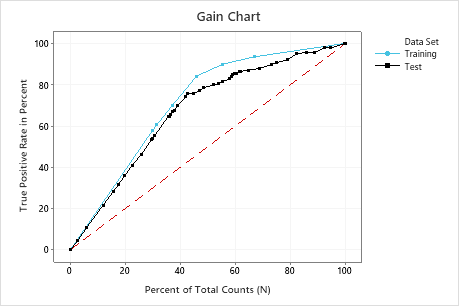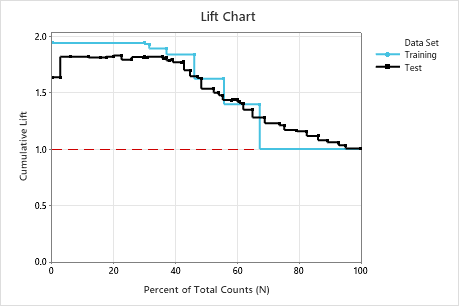Use the Gain and Lift charts to assess the performance of your classification model. The Gain chart plots the total positive rate in percent versus the percent of total counts. So, for example, these charts can show that 80% of the events are in 20% of the data. Thus, by focusing on 20% of the data, we can be efficient with our resources. The Lift chart plots the cumulative lift (or non-cumulative lift) versus the percent of total counts.
Interpretation of Gain chart

In this example, the gain chart shows a sharp increase above the reference line, then a flattening. In this case, approximately 40% of the data account for approximately 70% of the true positives.
Interpretation of Lift chart

In this example, the lift chart shows an increase above the reference line that gradually drops off.
